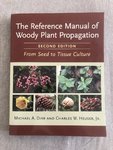The author of your write-up says in the first paragraph that they "consider the notion of hardwood cuttings of Japanese maple to be of unrealized merit", and that "one paper" from the annals of the Combined Proceedings of the International Plant Propagator's Society "stood alone"
This should set off alarm bells when you consider that they are referring to a plant variety that has been enthusiastically propagated since the 1600's, and whose documentation we can trace back to the 7th century. The first mention of intentionally produced Acer Palmatum 'cultivars' goes back to the 1700's, and there has been an unbroken history of publications ever since.
The global nursery industry has almost entirely opted to propagate Acer Palmatum via grafting, but if you speak to people who have had success propagating Acer Palmatum via cuttings--and who have tirelessly tried every option imaginable under ideal conditions--they will invariably tell you that softwood cuttings are standard practice and that they are best taken from early to mid May in most of the northern hemisphere. This applies to all of the traditional Acer Palmatum cultivars used for bonsai, as well as standard Acer Palmatum. (Beni Chidori and Deshojo have a lower yield, but still work well under the right conditions.)
Propagating Acer Palmatum for bonsai is extremely easy, as long as you understand what the factors are (listed below), and can keep the parameters within their fairly wide 'sweet spots'. If anybody doesn't succeed, it is because one of the parameters are off (i.e. it is never because we need to re-invent how cuttings are taken, or buy some new gadget like a plant 'cloning machine'). The old way is still the best way.
Timing
Substrate
Substrate Temp
Humidity
Mist
Light
Hormone



